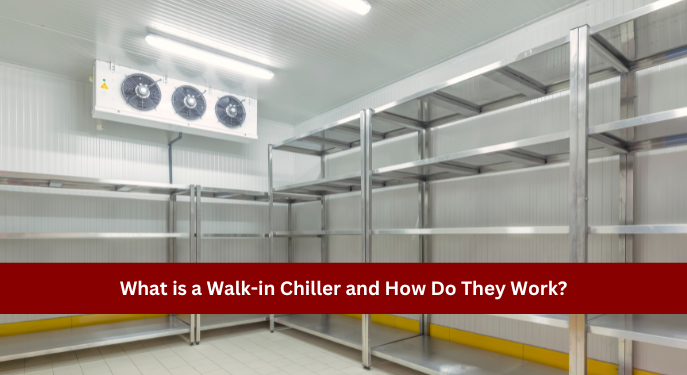What is a Walk-in Chiller and How Do They Work?
A walk-in chiller, also known as a walk-in refrigerator, is a refrigerated storage unit that maintains a temperature above 32 degrees Fahrenheit (0 degrees Celsius) but below 40 degrees Fahrenheit (4 degrees Celsius). It is designed to keep perishable food items fresh and prevent spoilage.
Components of a Walk-in Chiller
A walk-in chiller consists of several key components:
- Exterior walls and insulation: The outer walls are typically constructed of metal or concrete, and are insulated to prevent heat transfer from the outside environment.
- Interior lining: The interior is lined with a non-porous material, such as stainless steel or aluminum, to ensure easy cleaning and sanitation.
- Refrigeration system: This system is responsible for removing heat from the interior of the chiller to maintain the desired temperature. It typically includes:
- Evaporator coils: These coils absorb heat from the air inside the chiller.
- Condenser: This component releases the absorbed heat to the outside environment.
- Compressor: This unit circulates the refrigerant through the system.
- Blower fans: These fans circulate air throughout the chiller to ensure even temperature distribution.
- Doors and seals: The doors are designed to provide a tight seal to prevent warm air from entering the chiller.
How Walk-in Chillers Work
Walk-in chillers operate on a refrigeration cycle:
- Heat absorption: Refrigerant flows through the evaporator coils, absorbing heat from the air inside the chiller.
- Heat removal: The refrigerant, now a warm gas, is compressed by the compressor and flows to the condenser.
- Heat release: The condenser releases the heat to the outside environment, typically through a fan or water cooling.
- Refrigerant expansion: The refrigerant, now a cold liquid, flows back to the evaporator coils, where the cycle begins again.
This continuous cycle effectively removes heat from the interior of the chiller, maintaining a temperature below 40 degrees Fahrenheit.
Types of Walk-in Chillers
Walk-in chillers come in various types to suit different needs:
- Reach-in chillers: These are smaller units that can be accessed from the outside and are typically used in smaller establishments.
- Walk-in coolers: These are larger units that require entering to access the storage space. They are commonly used in restaurants, grocery stores, and other commercial settings.
- Freezer rooms: These units maintain temperatures well below freezing and are used for storing frozen food items.
Benefits and Applications of Walk-in Chillers
Walk-in chillers offer numerous benefits and are widely used in various industries:
- Food preservation and safety: They help maintain the freshness and safety of perishable food items by preventing spoilage and bacterial growth.
- Storage capacity: They provide ample storage space for a variety of food items, making them ideal for businesses with high storage needs.
- Energy efficiency: Modern walk-in chillers are designed to be energy-efficient, reducing operating costs.
- Versatility in use: They can be used to store a wide range of products, including meat, produce, dairy, and beverages.
- Industries that use walk-in chillers: Restaurants, grocery stores, hospitals, hotels, catering companies, and pharmaceutical manufacturers are among the industries that commonly utilize walk-in chillers.
Maintenance and Care of Walk-in Chillers
Proper maintenance and care are essential to ensure the efficient and long-lasting operation of walk-in chillers:
- Regular cleaning and sanitation: The interior and exterior of the chiller should be cleaned regularly to prevent contamination and odor buildup.
- Inspection of components: Components such as the evaporator coils, condenser, and compressor should be inspected periodically for signs of wear or damage.
- Temperature monitoring: The temperature inside the chiller should be monitored regularly to ensure it is being maintained at the desired level.
- Energy efficiency measures: Steps can be taken to improve the energy efficiency of the chiller, such as sealing leaks and replacing old components.
- Troubleshooting common issues: If problems arise, they should be addressed promptly to prevent further damage or disruption to operations.
Conclusion
Walk-in chillers are indispensable equipment for businesses that need to store perishable food items. They provide a safe and efficient way to maintain freshness and prevent spoilage. By understanding the components, operation, and maintenance requirements of walk-in chillers, businesses can ensure their optimal performance and longevity. As technology continues to advance, we can expect to see even more innovative and efficient walk-in chiller solutions in the future.



